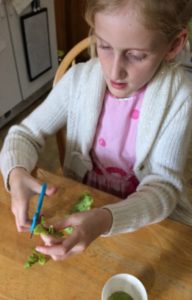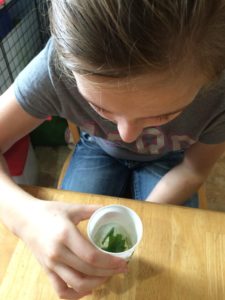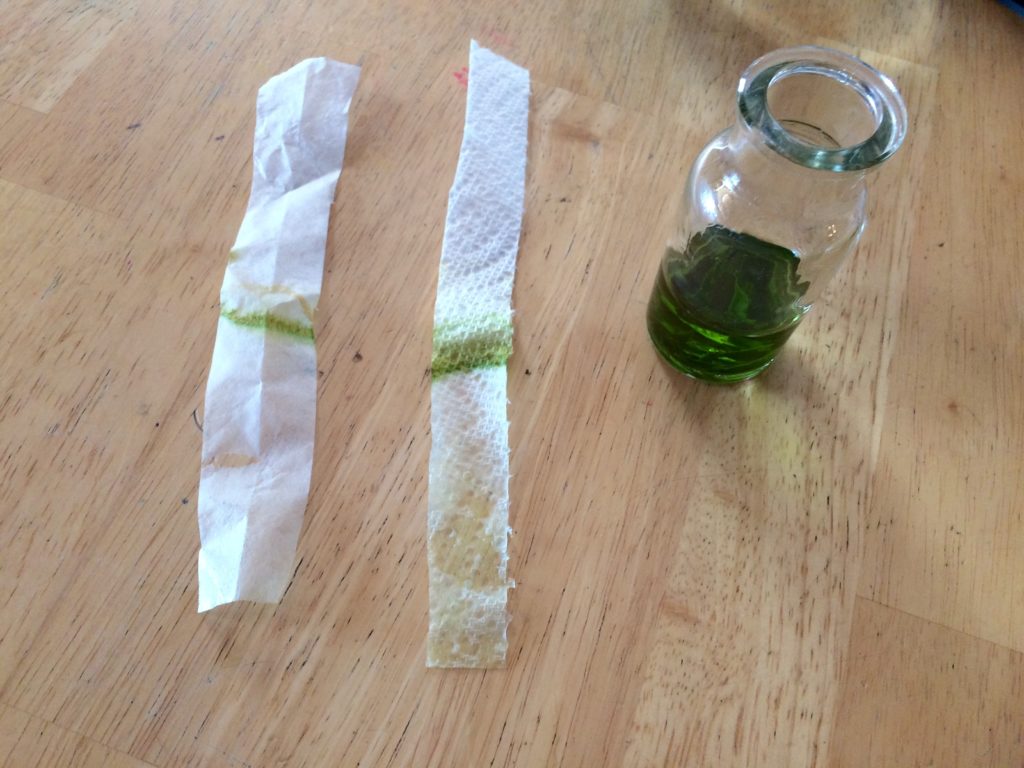Spring has officially sprung. The long cold days of winter have finally moved aside, allowing God’s beautiful green canvas to once again clothe the earth. The morning air is not so crisp, and the songbird’s praises once again fill the morning air. Little green shoots have begun to poke up their sleepy heads, reaching eagerly for the warmth of the sun, just as we creep out from our own slumber and darkness, seeking life from The Son.
Being able to go out in nature and teach our children from God's handiwork is such a privilege. Click To TweetWhat better way for homeschool moms to welcome spring, than to do a science experiment about this resurrected life? I love hands-on learning and we do lots of science experiments around our house.
Today we decided to learn about chlorophyll chromatography: the scientific process for finding out what color pigments are in the leaves we select. I pulled out our A Reason For Science level F student work-text and turned to Lesson 3 on page 19, Leaching Leaves. I grabbed our handy Team Materials kit, and gathered up the kids. One nice thing about having the Team Materials kit that goes along with the book is you always have what you need and don’t have to make that mad dash to the local store. Surely I’m not the only mom who has to do that.

This experiment reveals the different colors hidden inside a leaf’s green cloak. I sent the kids all out hunting for green leaves while I set up our supplies. When they all clamored back in with their treasures, I had them jot down a hypothesis of what colors they thought were in their leaves. Next, we passed around the scissors and cut the leaves into tiny pieces.

Then we mixed the leaves into the acetone (fingernail polish remover), but rubbing alcohol would also work.

The directions say to let it sit overnight, but we cheated and set it in a pan of hot water on the stove to steep for about 45 minutes. The water turns quite green, as it draws the chlorophyll out of the plant. We cut a strip from a coffee filter and placed it dangling over the rim of our cups, with the end in the water. Over the next couple of hours, the pigments were slowly drawn up the filter paper. You could also use a piece of a paper towel if a coffee filter isn’t handy.

We left our setup for a few hours while we worked on our other subjects, then went back to record our observations. All of us were surprised to see colors other than green on the filter paper. We just don’t think about there being anything other than what we see.

It’s easy to judge a person by what we see on the outside, just as we assumed what the pigments in the plants would be, by what we saw on the outside. What we observe outwardly isn’t always how it really is. Aren’t we glad God sees us in truth? 1 Samuel 16:7 tells us that God doesn’t look at outward appearances, but at our hearts. I like to think heaven will be so wonderful because we will be able to see and know each other so clearly and deeply, without all our preconceived misconceptions. It is just amazing the way God has created our world, giving us sneak peeks of His heavenly kingdom in His earthly one. Being able to go out in nature and teach our children from God’s handiwork is such a privilege. Enjoy these wonder years with your little ones in God’s glorious creation.
Disclosure: Links in this post are not affiliate links. However, A Reason For® is the sponsor of this website and did provide A Reason For Science® Level F (student worktext, teacher guidebook and team materials kit) to Bridgitt at no charge. Bridgitt did not agree to provide a positive review nor did she accept compensation to do so. The opinions expressed / implied by Bridgitt are her own thoughts and observations after using A Reason For Science® materials as a homeschool resource.
